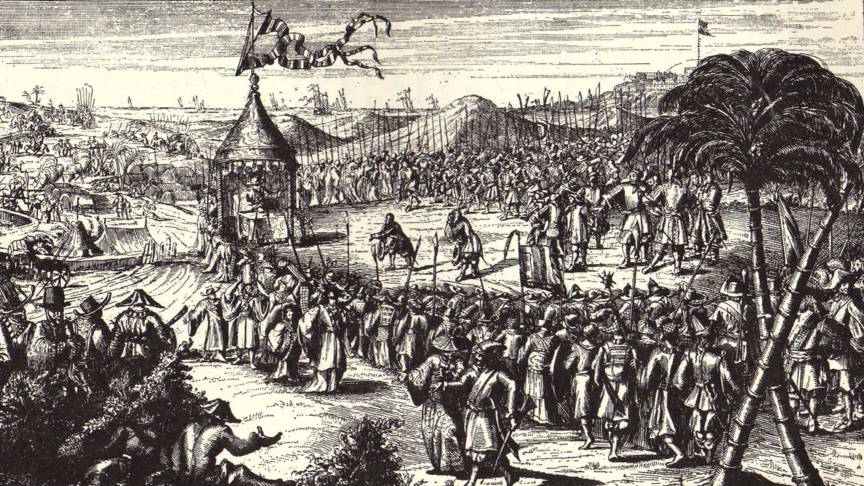Possibly, some ships from the nine month siege (1661-1662) have been discovered! At this moment, the condition of the vessels is unknown. The ships were found on a stone throw's distance from the ruines of the Dutch Fort Zeelandia.
Dutch Colonial Era Ships Found in Tainan
Eight wrecks dating back to the Dutch colonial era have been discovered underwater in Taijiang National Park, Tainan, according to Acadamia Sinica Department of History and Philology researcher Liu I-chang.
The ships were found after a study was commissioned four years ago. Mr Liu called on the government to develop an excavation plan. He said Taiwan played an important role in the age of exploration in the 17th century and that this history should be shared with the rest of the world. So far relevant government units have taken no action.
Four of the ships have been located on the banks of Yanshui Creek.
Mr Liu pointed out that the area is under development pressure, and that antiquities have been found at sites being developed. Developers have failed to report finds as required by law.
Tiajiang National Park authorities said that underwater archeology falls under the jurisdiction of the cultural bureau, and is an costly enterprise.
The Dutch established a fort and settlement at Fort Zeelandia in 1624. At that time Tiajiang was a lagoon. After the Ming Dynasty was overthrown by the Qing, Ming loyalist Koxinga made a sneak attack on Fort Zeelandia via the Tiajiang lagoon, sinking Dutch vessels and laying siege to the fort. Koxinga eventually defeated the Dutch and expelled them.
When Koxinga’s fleet surprised the Dutch by slipping past Fort Zeelandia through Lakjemuyse, into the Tayowan inland sea, laying siege to Fort Provintia, many Dutch vessels were destroyed. Archaeologists have just discovered 8 of them at the bottom of the Taijiang National Park.
On record, the Dutch forces lost the Hector, the Emmenhorn, the Koukerke, and the Cortenhoef. If the 8 ships discovered at the bottom of the lagoon is one of these ships, it would be an amazing discovery.
Fort Zeelandia in the early 17th century.
The surrender of the Dutch
Fort Zeelandia:







